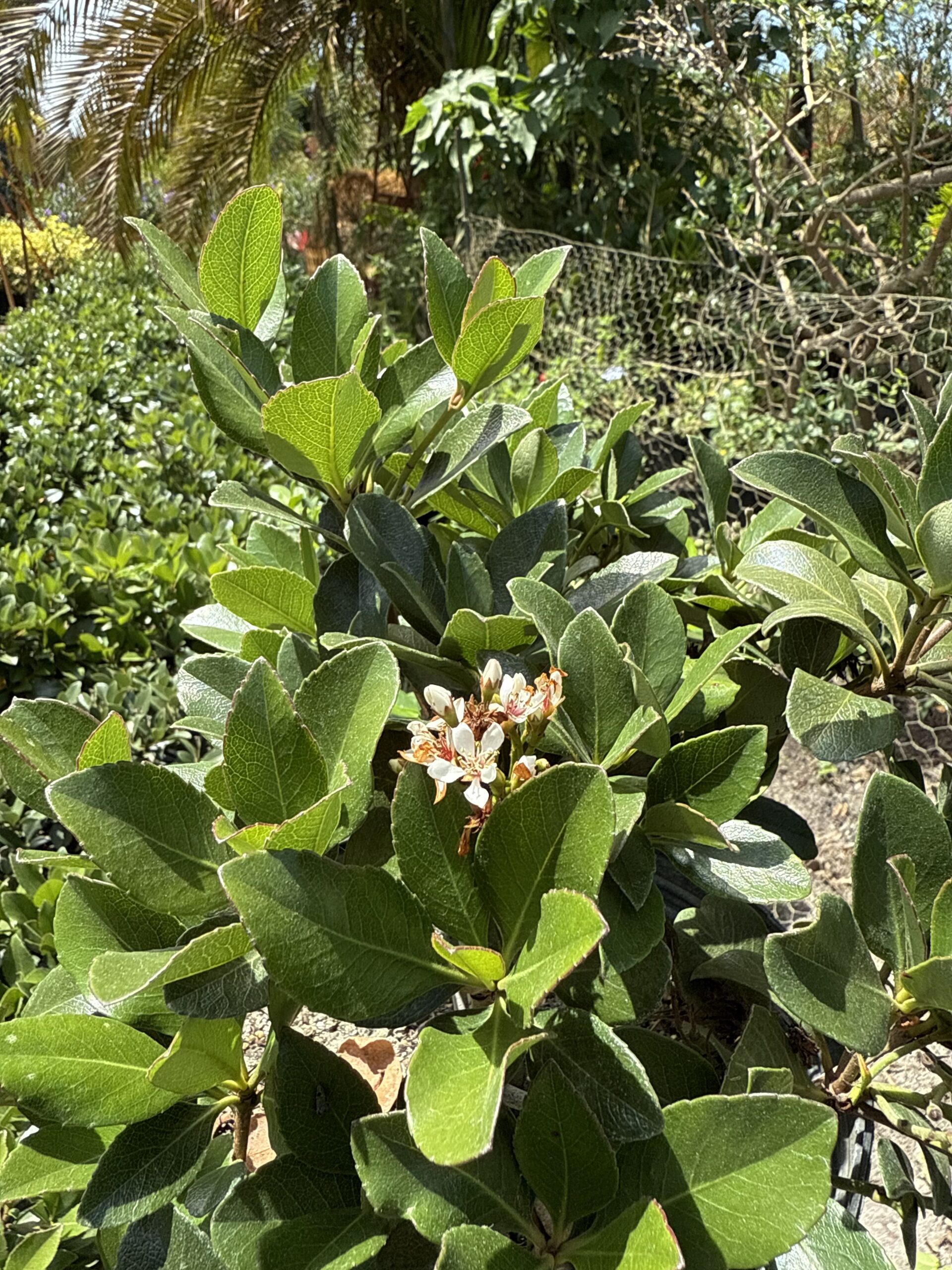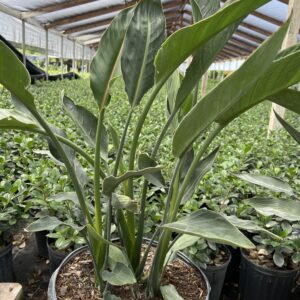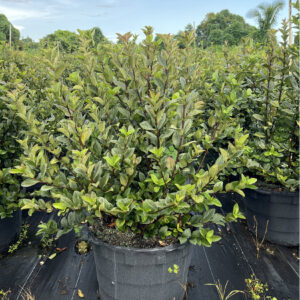Indian Hawthorn
The Indian Hawthorn (Rhaphiolepis indica) is an evergreen shrub known for its glossy, dark green foliage and clusters of pink or white flowers that bloom in spring. It typically grows 3-5 feet tall and wide, making it perfect for low hedges, foundation plantings, or containers. This hardy plant thrives in full sun and well-draining soil, and is drought-tolerant once established. It produces small, dark berries that attract birds and wildlife, adding seasonal interest. Low-maintenance and pest-resistant, the Indian Hawthorn is a versatile and reliable choice for landscapes.
$15.00
Availability: In stock
Related products
-
All Products
Bird of Paradise Orange
$45.27 – $236.25Price range: $45.27 through $236.25 This product has multiple variants. The options may be chosen on the product page -
All Products
Viburnum Suspensum
$36.20 – $253.53Price range: $36.20 through $253.53 This product has multiple variants. The options may be chosen on the product page
The Indian Hawthorn (Rhaphiolepis indica) is a compact, evergreen shrub renowned for its attractive flowers, dense foliage, and versatility in landscape design. Native to East Asia, this hardy plant is a favorite among gardeners for its ability to thrive in a variety of conditions, from sunny garden beds to low-maintenance hedges. Known for its rich green leaves, beautiful spring blooms, and colorful winter berries, the Indian Hawthorn offers year-round visual interest and makes an excellent addition to both residential and commercial landscapes.
One of the standout features of the Indian Hawthorn is its stunning clusters of pink or white flowers that bloom in spring. The flowers, which appear in small, fragrant clusters, add a burst of color and a sweet fragrance to gardens during the early part of the year. These blossoms are particularly striking when they emerge against the backdrop of the plant’s dark green, leathery leaves. The flowers are followed by small, round, purple to black berries that ripen in late summer and persist into the fall, attracting birds and wildlife. While the fruit is not typically edible for humans, it provides seasonal interest and offers a food source for local fauna.
The Indian Hawthorn has a dense, rounded growth habit, making it an excellent choice for low hedges, foundation plantings, or as a backdrop in garden beds. It typically grows to a height of 3 to 5 feet and can spread up to 4 to 5 feet wide, though it can be pruned to maintain a more compact size. This shrub’s versatility allows it to be used in various landscape designs, including formal gardens, coastal landscapes, and urban settings. It works well as a border plant, a specimen shrub, or even in containers for patios and balconies.
In terms of care, the Indian Hawthorn is a relatively low-maintenance plant, though it does prefer well-draining soil and should not be overwatered. It is drought-tolerant once established, making it ideal for xeriscaping or areas with water restrictions. The plant thrives in full sun but can tolerate light shade, though its flower production may decrease in shaded conditions. To ensure optimal growth and flowering, it is best to plant Indian Hawthorn in a sunny location where it will receive at least 6 hours of direct sunlight a day.
The Indian Hawthorn is also quite adaptable to different soil types, including clay, loamy, and sandy soils, as long as the soil drains well. It prefers slightly acidic to neutral pH levels and should be planted in an area that avoids standing water. Once established, this shrub is resistant to many common garden pests and diseases, though it can be susceptible to fungal issues in very damp conditions. Regular pruning to remove dead or damaged wood will help maintain its shape and prevent any disease buildup.
For those looking to add a splash of color to their landscape, Indian Hawthorn is an excellent choice. It offers a clean, polished appearance with its evergreen foliage, ensuring that it remains attractive throughout the year. Its rounded shape and tidy growth make it perfect for adding structure and formality to garden designs, while the spring flowers provide a cheerful, colorful display. Additionally, the small berries that follow the flowers provide a beautiful contrast against the foliage in the fall and winter months.
This plant is also an excellent choice for coastal gardens, as it is salt-tolerant and can withstand the harsh conditions of seaside environments. The Indian Hawthorn can be used to create windbreaks, borders, or privacy screens in coastal regions, where it will thrive in the dry, salty air. It’s also a wonderful option for urban landscapes, where its compact size and resistance to pollution make it an ideal shrub for city environments.
The Indian Hawthorn’s beauty and adaptability extend to its ability to fit into a variety of garden styles, from traditional to modern. It can be used in mass plantings, as a specimen shrub, or even as part of mixed plantings where its colorful blooms and dense foliage create a lovely contrast with other flowering plants and shrubs. Its minimal maintenance requirements and pest resistance make it an excellent choice for homeowners and landscapers who want a reliable, beautiful plant without constant attention.
Indian Hawthorn is also a great option for attracting pollinators. The flowers are especially appealing to bees, butterflies, and other beneficial insects, making it an important plant for promoting biodiversity in the garden. Its berries, though not edible for humans, attract birds such as sparrows and thrushes, making it a great plant for birdwatching enthusiasts.
In conclusion, the Indian Hawthorn is a versatile, hardy shrub that brings year-round beauty and interest to the landscape. Whether used as a flowering hedge, specimen plant, or accent in garden beds, it provides rich green foliage, stunning spring flowers, and vibrant fall berries. Its low-maintenance care, pest resistance, and adaptability to different growing conditions make it an excellent addition to any garden, while its attractive appearance ensures that it remains a standout feature in any outdoor space.



